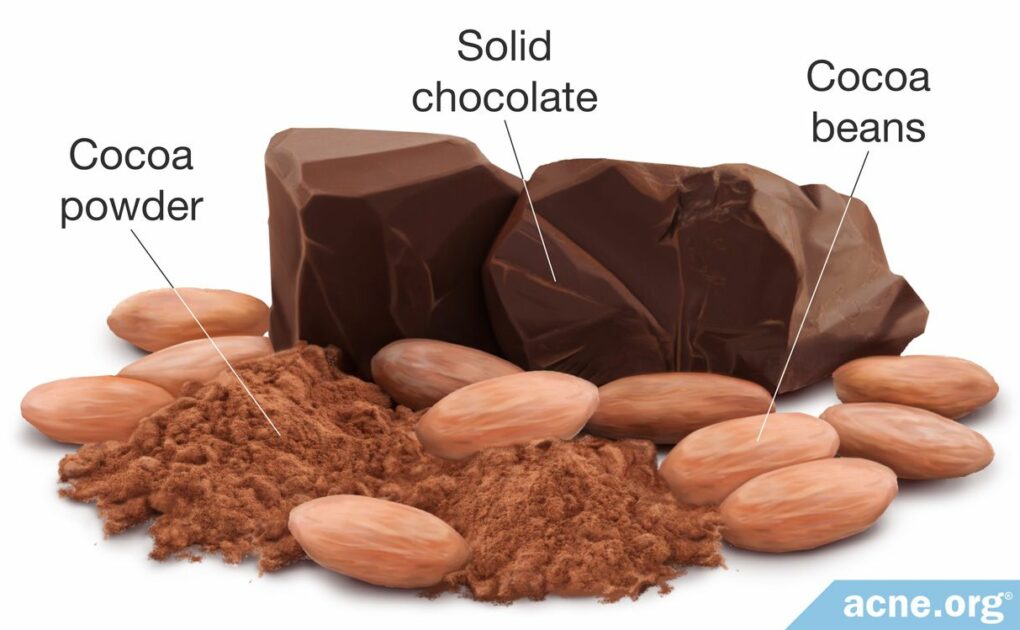Some Evidence Is Beginning to Show that Chocolate Might Increase Acne Symptoms, But It Is Too Soon to Say for Sure

The Essential Info
The first study on chocolate and acne, published in 1969, concluded that chocolate had no effect on the severity of acne, and despite several serious design flaws in the study, this was generally accepted as fact for decades.
After almost 50 years of no further research, interest in the potential effects of chocolate on acne resumed in earnest in 2011, and since then researchers have performed 11 more studies, with 10 of them demonstrating a weak relationship between chocolate consumption and an increase in acne. However, all of these more recent studies also had their own limitations, so it is still too soon to say for sure whether chocolate increases acne.
All Things in Moderation: Eliminating chocolate from the diet is unlikely to result in a noticeable decrease in acne. It is safe to enjoy the occasional chocolate treat based on the evidence we currently have, but it may be best not to overdo it. All things in moderation.

The Science
- 1969: No Relationship Between Chocolate and Acne
- Since 2011: Weak Relationship Between Chocolate and Acne
- Conclusion from the Studies
- Why Chocolate and Acne Might Be Related
- The Bottom Line
Chocolate is typically made with sugar, milk, and cocoa butter, all of which might hypothetically increase acne.
On the flip side, chocolate contains antioxidants called flavonoids, which might hypothetically decrease acne.
So will chocolate increase or decrease acne, or for that matter, have no effect?
The best way to know the truth is to look at scientific studies. And here’s where it gets interesting. One flawed study in 1969 led to decades of runaway rumors that chocolate and acne are not connected.
How the rumors started: One initial and flawed study in 1969 found no connection between chocolate and acne. Since this was the only evidence available, everyone from dermatologists to medical textbooks seemed to get in line, repeating that chocolate has no effect on acne. The rumor mill continued until 2011, when research into chocolate and acne resumed and 10 new studies all found a weak connection.
Let’s start by looking at the initial 1969 study that got the whole world saying chocolate does not affect acne, and see why its conclusions are suspect.
1969: No Relationship Between Chocolate and Acne
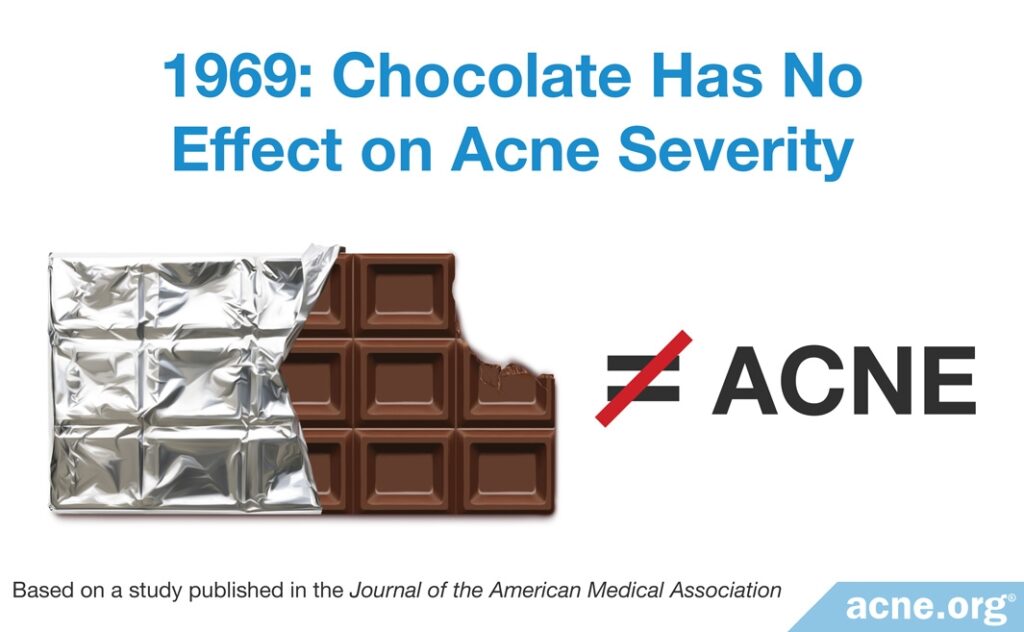
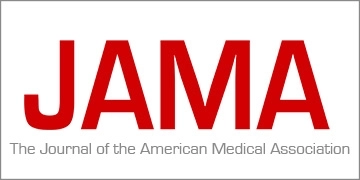
In 1969, a study published in the Journal of the American Medical Association first explored the relationship between chocolate and acne.
The study included 35 young adult male prisoner volunteers in addition to 30 male and female adolescents. The participants were given either a chocolate bar or a placebo bar. The placebo bar was a bar that looked and tasted like chocolate but contained no chocolate. At the end of the study, the researchers concluded that chocolate had no effect on acne severity.1
This study took on a life of its own, with other researchers often citing it in other scientific literature, and its conclusions remained unchallenged for decades. However, in 2011, a closer inspection of the 1969 study’s design and methods discovered many worrying limitations, including:
- Differences in gender composition between the group that received the chocolate bar and the group that received the placebo bar.
- Excluding the age of participants. Neither the “young adult male prisoners” nor the “adolescent boys and girls” mean age was stated.
- Variations in menstrual cycle, weight, stress, lifestyle, and the use of caffeine, tobacco, or medications amongst participants, all of which may affect acne severity, were not mentioned.
- Differences in composition of the chocolate bars and the placebo bars. The placebo bars contained more hydrogenated fats.
- The short duration of the study (4 weeks).
- Not including a description of the statistical methods.
- A conflict of interest. The study was sponsored by the Chocolate Manufacturers Association of the USA!2
Due to the design flaws of the study, its conclusions are now widely seen as unreliable.
Since 2011: Weak Relationship Between Chocolate and Acne
Beginning in 2011, scientists began taking a fresh look into chocolate and acne and have published 11 new studies, 10 of which have found a weak link.
We will go through them one by one now. However, as you read, keep in mind that studying the effect of diet on any disease is difficult, and so conclusions are still tentative.
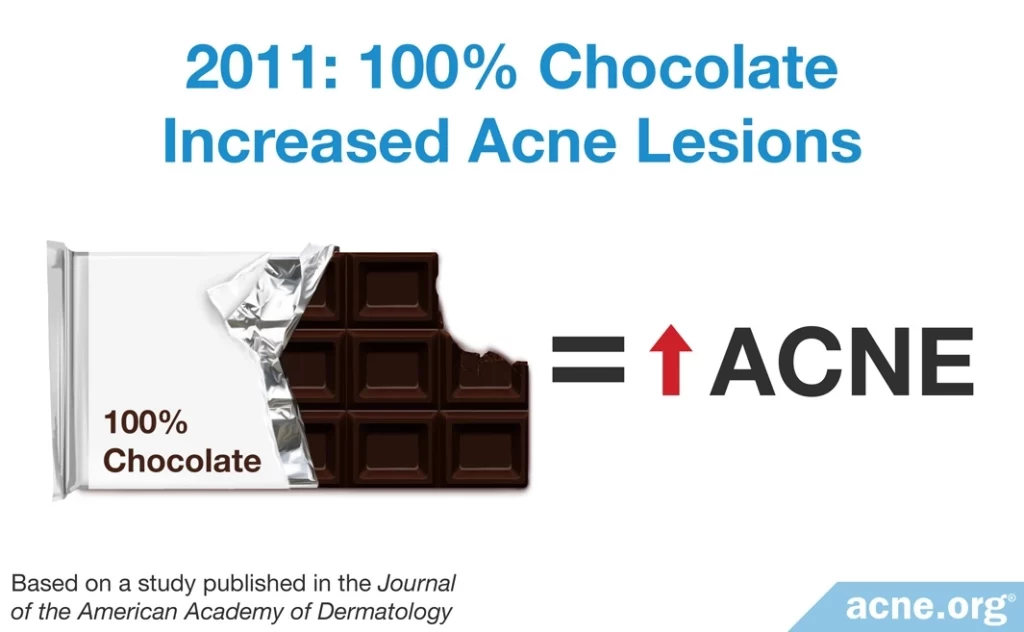
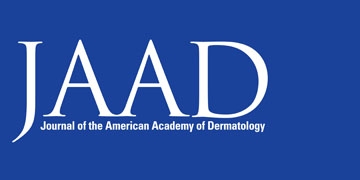
In 2011, a study published in the Journal of the American Academy of Dermatology found that 100% chocolate increased the number of acne lesions in a group of 10 men between the ages of 18 and 35.3
However, this study also had limitations, including:
- No control group.
- Small sample size (only 10 people).
- Exclusion of females.
- Limited follow-up time.
- Variables such as diet (sugar and calorie intake), weight, or smoking status, all of which may influence the development of acne, were not mentioned.3
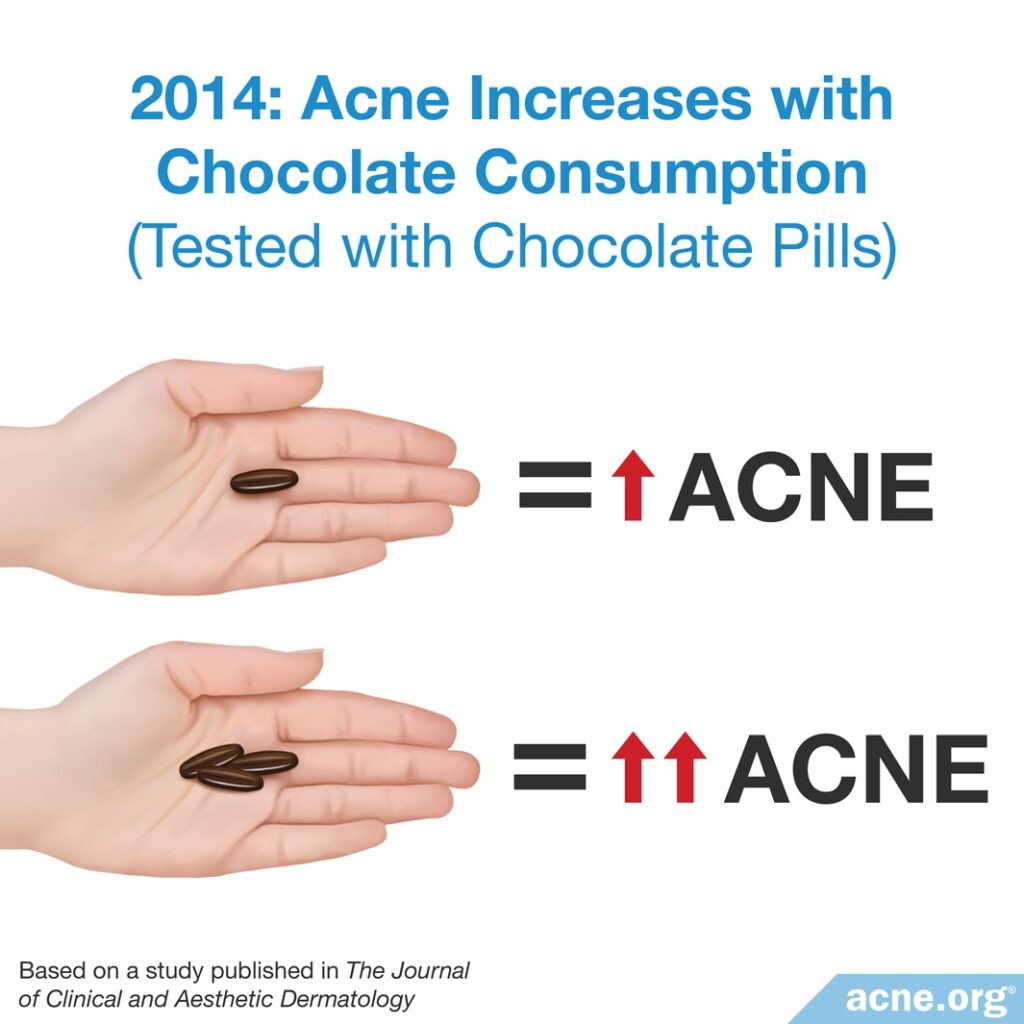
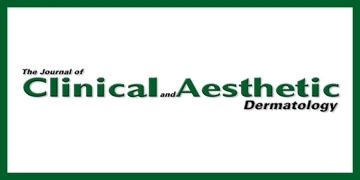
In 2014, another study was performed that expanded on the 2011 study. Thirteen male subjects with mild acne took either capsules filled with 100% cocoa, capsules filled with only hydrolyzed gelatin (placebo), or a combination of both. The results showed an increase in acne on day 4 and day 7. The authors concluded that there was a correlation between the consumption of chocolate and an increase in acne lesions observed during their study.4
However, there were considerable limitations to this study, including:
- Small sample size (only 13 people).
- Exclusion of females.
- Variables such as the amount of dairy or sugar consumed, were not mentioned.4
- Very short one-week study.
- Acne lesions can take 2-6 weeks to form.
- Therefore, it is unclear whether other factors or the consumption of chocolate played a role in the results observed.
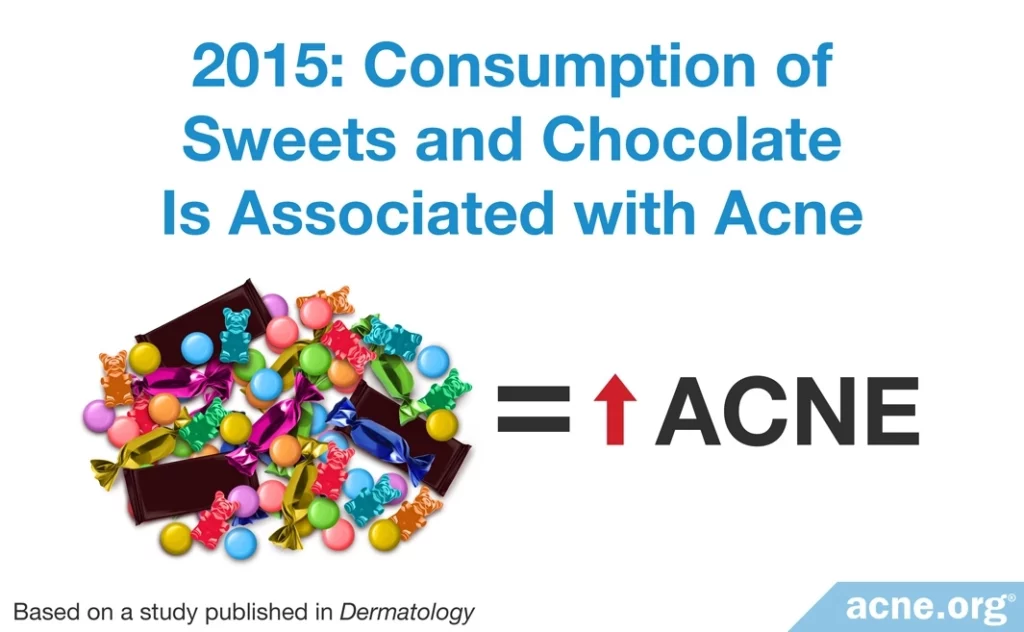
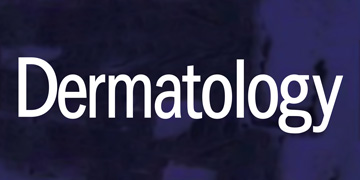
In 2015, a survey of 2,266 French adolescents and young adults, of which 1,375 participants had acne and 891 participants had no acne, found that the consumption of chocolate and sweets was associated with participants who reported having acne.5
However, once again, this study had limitations, including:
- Variables such as sugar, milk, and chocolate were not separately investigated.
- Self-reported data.
- The study relied on survey answers from participants, which is not the most robust method of gathering data.5
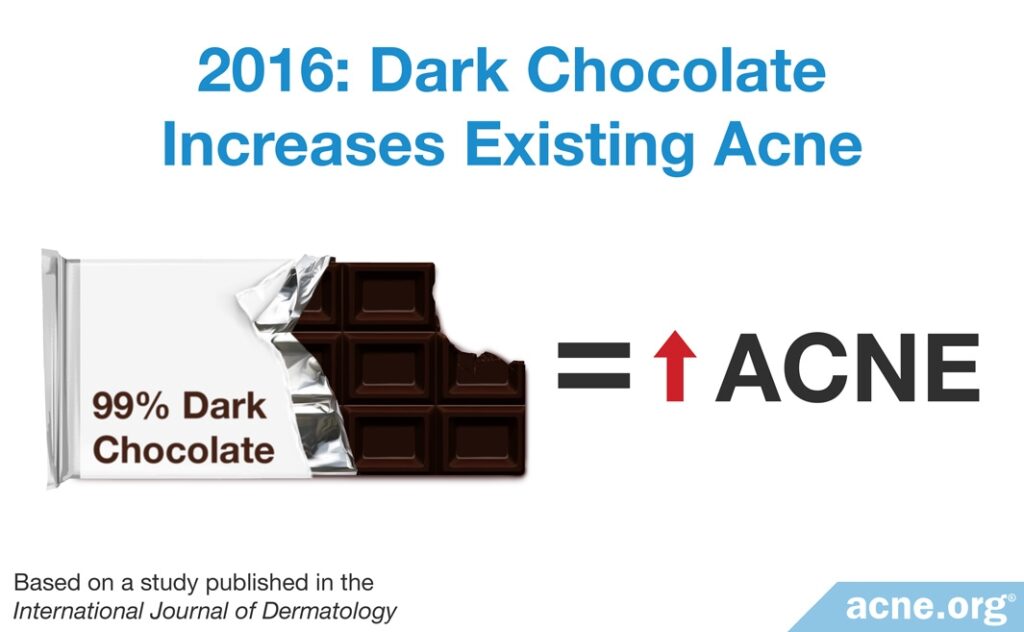
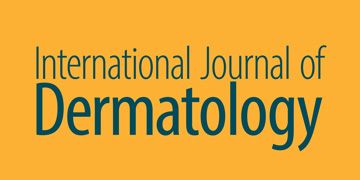
In 2016, a study of 25 men aged 18 to 30 years old found that 99% dark chocolate increased existing acne.6 After a 4-week period of abstaining from any food containing chocolate, the researchers asked participants to consume 25 grams of 99% dark chocolate daily for an additional 4 weeks. The study stated that the participants’ diets did not change significantly throughout the study period, and concluded that the dark chocolate caused the increase in acne.6
However, limitations to the study included:
- No placebo group.
- A small sample size (only 25 people).
- The exclusion of females.
- Lifestyle variables such as the participants’ consumption of alcohol, dairy, and sugar, were not controlled during the study.
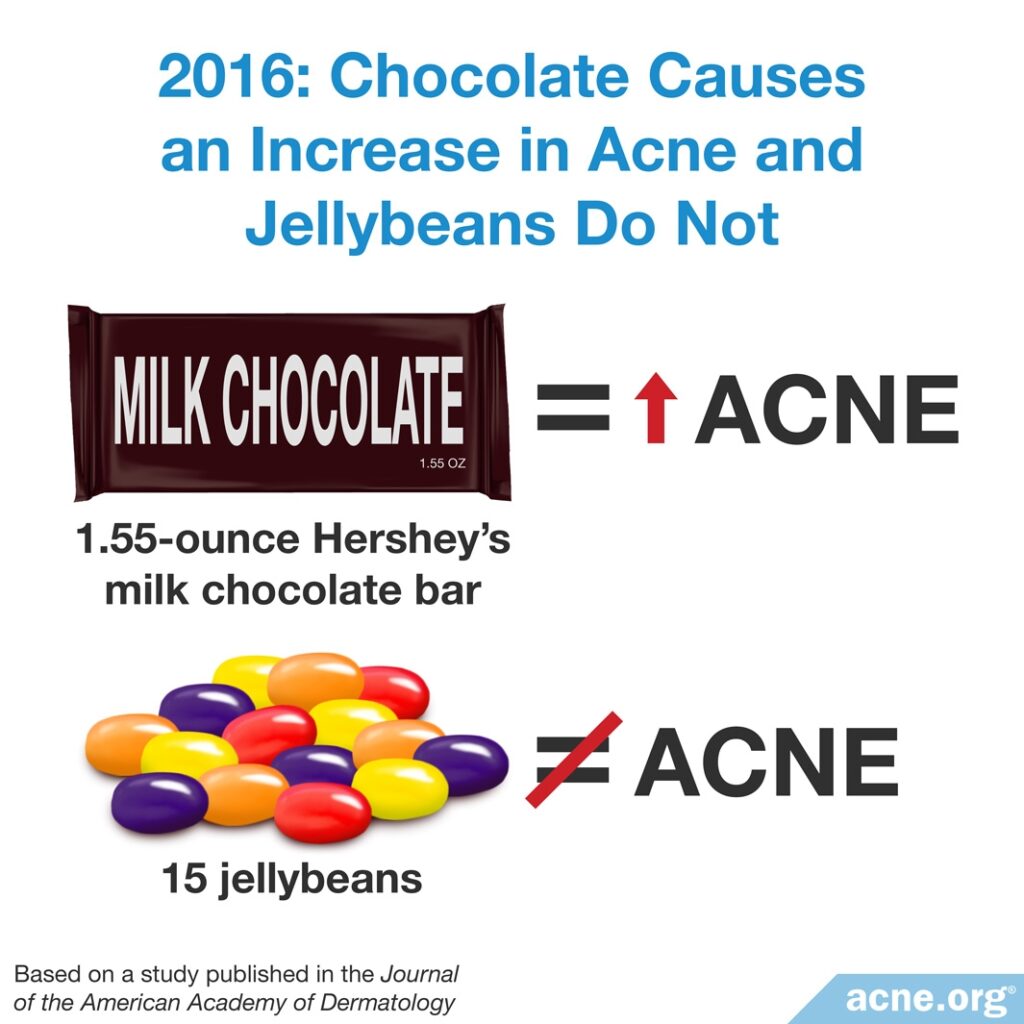

In 2016, a study found that the consumption of milk chocolate appeared to increase acne lesions among 54 college students with an average age of 21.4 years.7 In this study, 54 students were divided into two groups. One group was given a 1.55-ounce Hershey’s milk chocolate bar, and the other group was given 15 Jelly Belly jellybeans. Both types of candy had the same glycemic load. Neither group was allowed to eat chocolate other than the chocolate provided during the study.
Researchers assessed the number of acne lesions 48 hours after participants ate the candy. Then, four weeks after the first trial, the type of candy each group consumed was switched, and acne lesions were again assessed 48 hours later.
In both trials, the researchers observed an increase in acne lesions among participants consuming milk chocolate compared to those consuming jellybeans.7
However, as with all of the other studies, there were several limitations to this study, including:
- A small sample size (only 54 people).
- The variable of dairy, which is present in milk chocolate, was not controlled for. Some weak evidence shows that dairy may aggravate acne, and researchers did not take dairy under consideration.
- Extremely short study. Since acne can take 2 to 6 weeks to form, observing acne formation after 48 hours may not be enough time to determine whether chocolate caused the observed increases.6
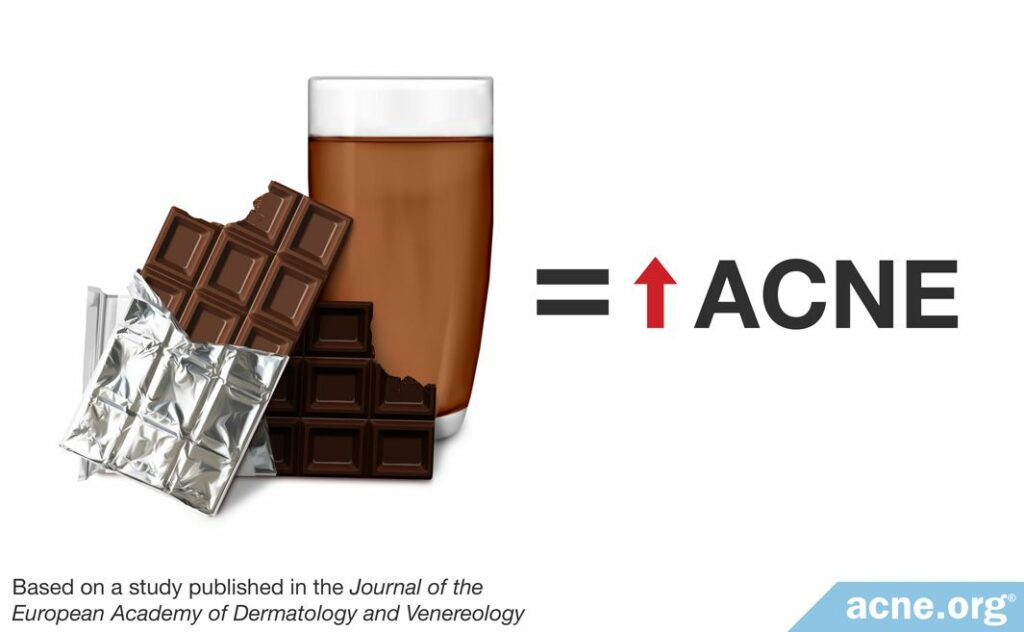
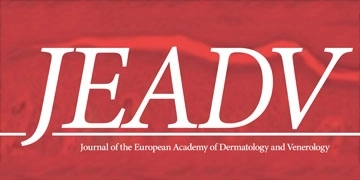
Also in 2016, a study published in the Journal of the European Academy of Dermatology and Venereology found a link between high consumption of chocolate and moderate-to-severe acne. This was a case-control study, which means the researchers identified a group of people with acne and a similar group of people without acne, and then looked for differences in lifestyle between these two groups. Specifically, one of the differences they looked for was a difference in chocolate intake.
In this study, the researchers analyzed data on a total of 563 people between the ages of 10 and 24. They found that people in the “moderate-to-severe acne” group were more likely to consume chocolate more than 3 times a week compared to people in the “no acne” group.8
However, this study also had limitations:
- The study was a case-control study. In general, scientists consider case-control studies to be low-quality evidence, because this type of study may show many differences between two groups of people, and it is impossible to say which differences might have contributed to the disease in question.
- As in the previous study, the researchers did not take into account how much dairy each person consumed. Milk chocolate contains dairy, and there is some weak evidence that high dairy consumption may contribute to acne.
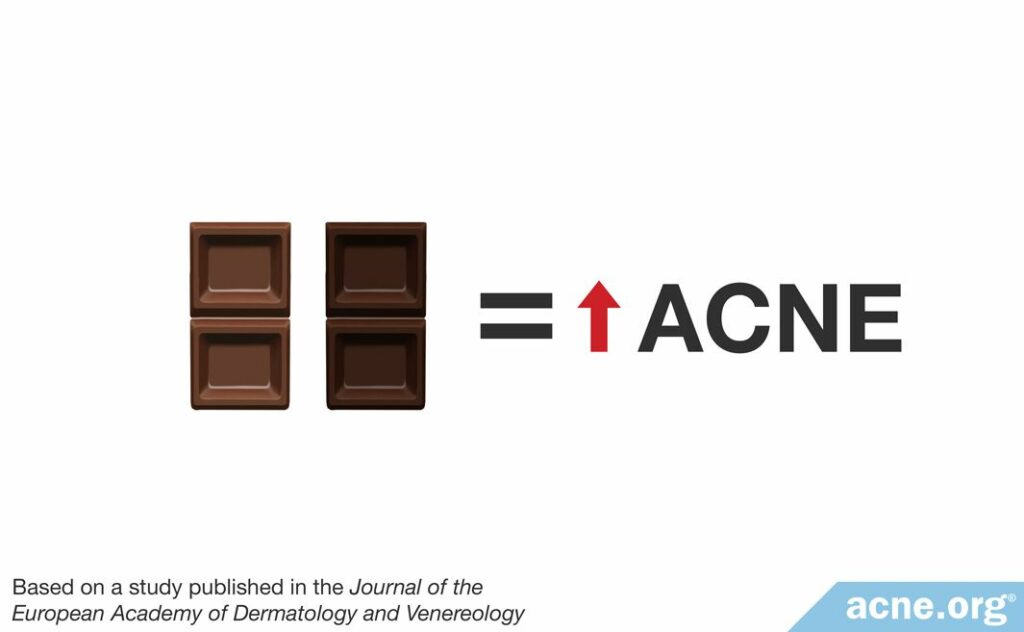
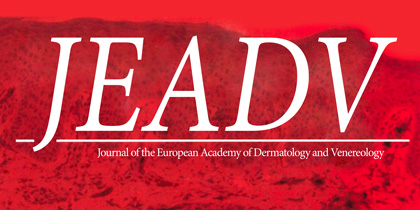
A 2018 study published in the Journal of the European Academy of Dermatology and Venereology also found a link between chocolate consumption and self-reported acne. In this study, the researchers conducted an online survey of 10,521 people across 7 European countries. In each country, the scientists surveyed diverse individuals between the ages of 15 and 24. The survey revealed that young people who reported consuming chocolate were more likely to have acne. The researchers wrote, “Consumption of chocolate increased the probability of having acne by up to 30%.”9
However, there were limitations to this study:
- The study was an online survey, so there was no way to confirm that participants’ responses were truthful and accurate.
- Survey participants who reported having acne had diagnosed themselves instead of being seen by a physician.
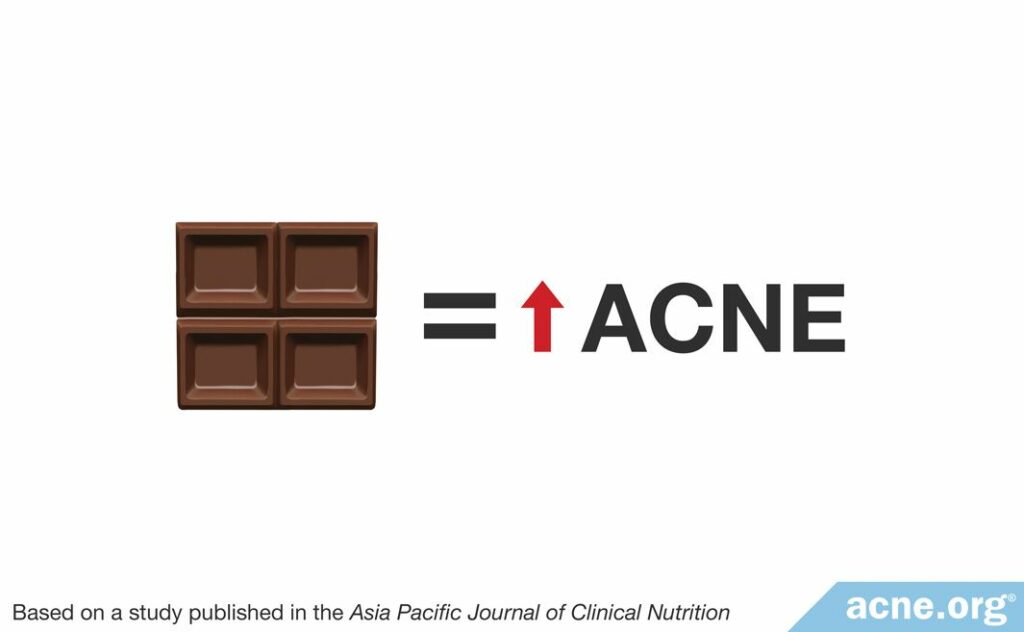
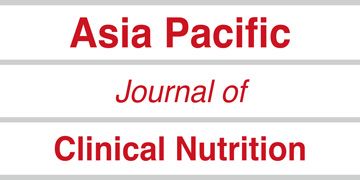
A 2018 study published in the Asia Pacific Journal of Clinical Nutrition again found a link between self-reported chocolate consumption and acne. In this study, the researchers compared 57 Malaysian people with acne to 57 Malaysian people without acne who were matched for age and gender. All study participants were at least 14 years old.
The researchers evaluated each participant’s skin for acne and then asked each participant to complete a questionnaire about their chocolate intake and other habits. The scientists found that 43.9% of people with acne consumed chocolate, compared to only 24.6% of people without acne. This suggests that eating chocolate might make a person more likely to develop acne.
At the same time, the researchers also found that people with acne tended to consume more milk than people without acne. Since milk chocolate also contains milk, the scientists suspected that it may be the dairy in chocolate that might predispose people to acne.10
However, as with all the studies on this topic, this study had several limitations:
- This was a case-control study, which scientists consider to be low-quality evidence.
- The researchers relied on questionnaire responses, which means the participants may have misremembered or lied about their chocolate consumption.
- The researchers could not separate the effect of chocolate from the effect of dairy. In other words, we do not know whether it was the chocolate itself or the milk in chocolate that might have contributed to acne.
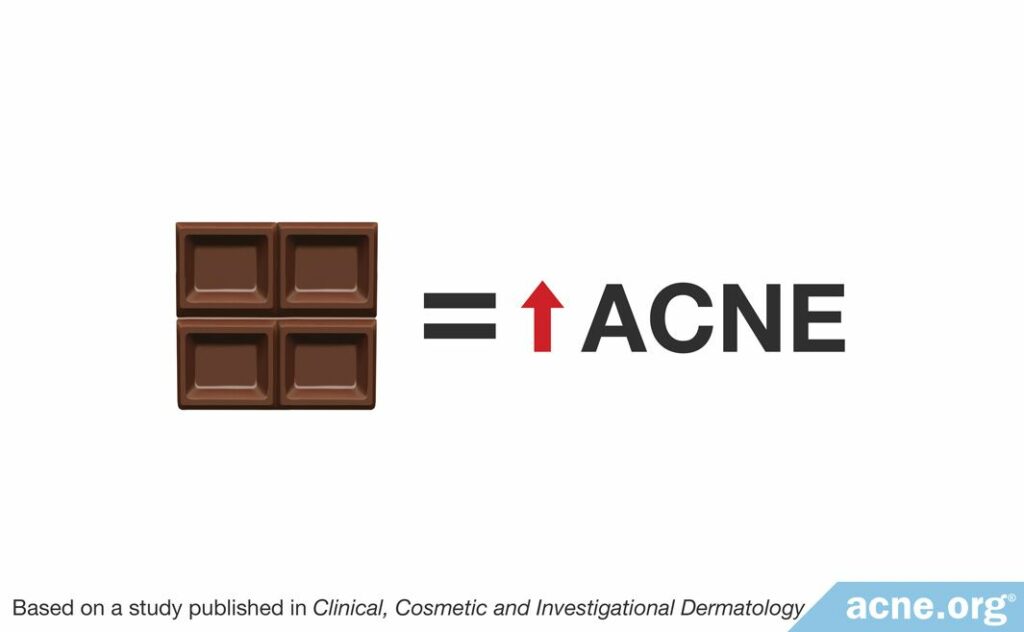
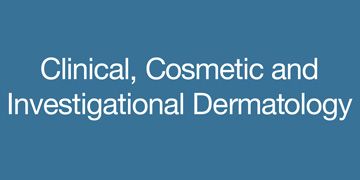
Next, a 2019 study in the journal Clinical, Cosmetic and Investigational Dermatology found a connection between chocolate intake and acne in people living in Afghanistan. The researchers looked at 279 people with acne and 279 people without acne who were matched for age and gender. All participants were 10-24 years old.
The researchers evaluated each participant’s acne and then interviewed them about their dietary habits. The scientists found that people with acne tended to consume more chocolate than people without acne. In addition, they found that people who drank whole milk 3 or more times per week were more likely to suffer from moderate-to-severe acne. Therefore, the researchers concluded that the dairy in chocolate might predispose people to acne.11
This study had similar limitations to other studies on this topic:
- It was a case-control study.
- The researchers relied on the participants’ ability to remember how often they consumed chocolate and dairy.
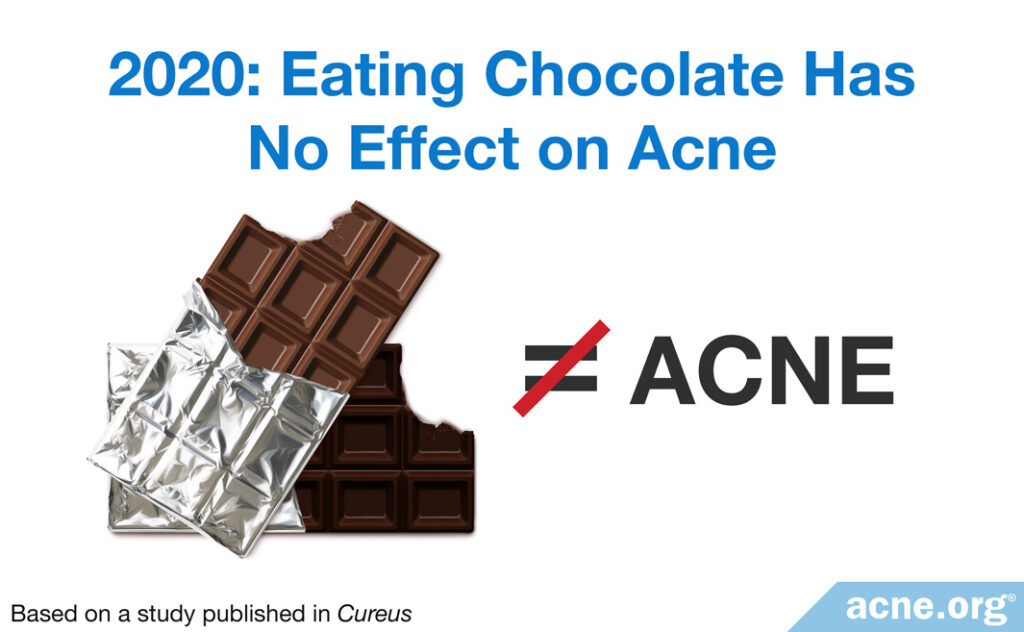
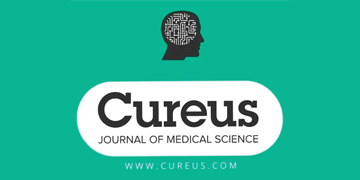
In 2020, one study finally broke the streak of scientific articles showing a possible connection between chocolate and acne. This study was published in the journal Cureus and looked for a connection between lifestyle factors, including consumption of chocolate, and acne in 484 responders to a questionnaire. The researchers found no significant link between consuming chocolate and having acne, even in people who reported that they ate chocolate every day. The scientists concluded that while some lifestyle factors may impact acne development, chocolate consumption might not.12
However, similar to other questionnaire-based studies, this study had several limitations:
- The study relied on participants’ recall of their chocolate consumption and other habits, making the evidence inherently unreliable
- Some of the study participants who reported having acne had diagnosed themselves without seeing a doctor.
- The study looked at many aspects of lifestyle that might affect acne, including diet, smoking, and exercise, as well as other factors like the participants’ skin type and whether they had relatives with acne. This is a bit like trying to solve a crime with a dozen different suspects: they might all be innocent or might all have participated in the crime together, or anything in-between. The more factors researchers look at at the same time, the harder it is to tease apart which ones might have really made a difference to acne, and to what extent. For instance, in this study, the researchers saw that people with acne were more likely to be obese, suffer from high stress, and eat nuts. To use our crime analogy, obesity, stress, and nuts were all seen at the scene of the crime, but we don’t know which one, if any, actually committed the crime.
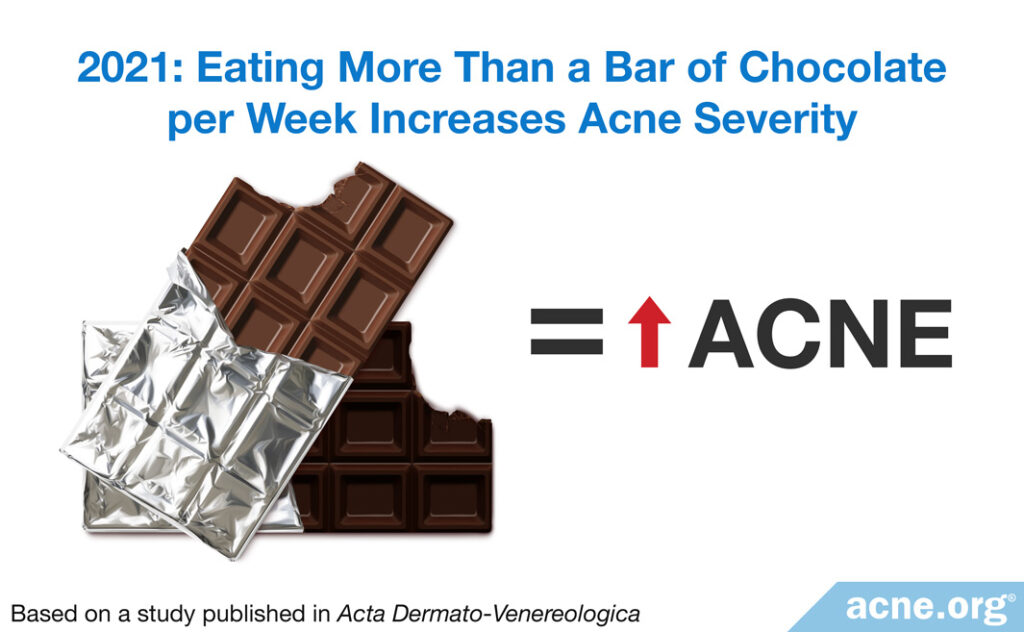
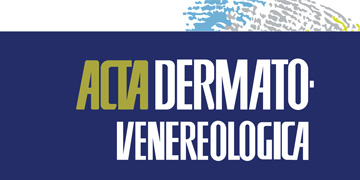
Lastly, in 2021, yet another questionnaire-based study did find a possible connection between chocolate consumption and acne. This study was published in the journal Acta Dermato-Venereologica and included 2,467 participants. The participants answered questions related to acne, dietary habits, menstrual cycle, and other factors. The researchers found a link between consuming more than 100 g of chocolate per week (equivalent to eating more than one bar of chocolate a week) and acne severity.13 In other words, people with more severe acne tended to eat more chocolate.
Even though this was a fairly large study, it was still hampered by some limitations:
- As in other questionnaire-based studies, the information entered by the participants regarding their acne and diet was not independently verified by the researchers and may have been inaccurate.
- This was a type of study called a cross-sectional study, meaning it was a snapshot of people’s acne and diet at one moment in time. Cross-sectional studies provide a low level of evidence because it’s impossible to say what specifically in each person’s past behavior contributed to their current state of health.
Conclusion from the Studies
Overall, after 2011 we can see evidence mounting that chocolate might in fact lead to increased acne symptoms. However, every study had serious limitations. Therefore, while it is interesting that 10 out of 11 studies after 2011 show a correlation between chocolate and acne, we still cannot state definitively that there is a link.
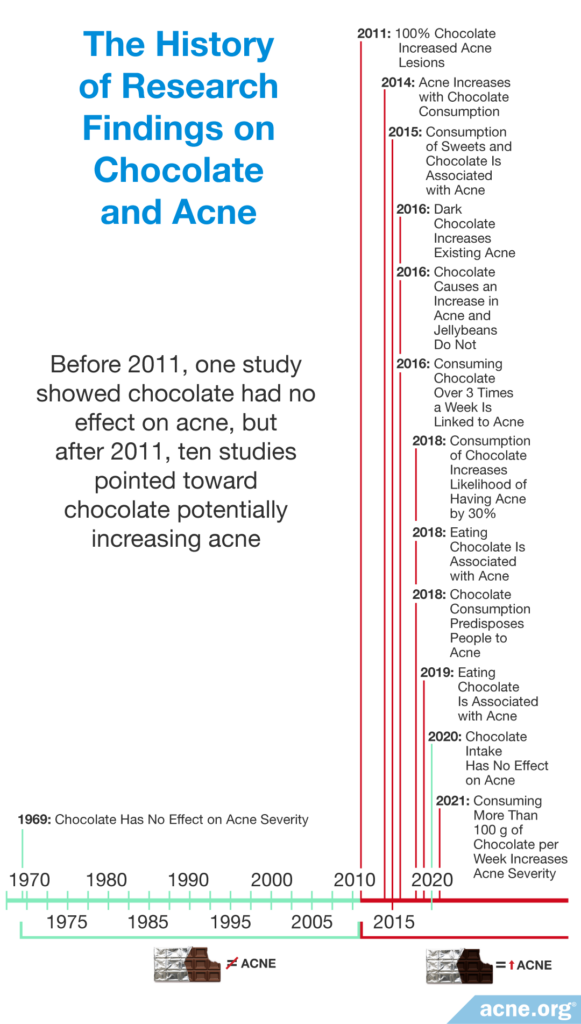
Why Chocolate and Acne Might Be Related
Since data from studies remains inconclusive, let’s look at chocolate itself and see how it might increase acne, decrease acne, or have no effect.
How chocolate might increase acne:
- Chocolate has been shown to stimulate the effects of inflammatory molecules called cytokines. Acne is an inflammatory disease, so any increase in inflammation could make acne worse.15,16
- Sugar is normally a main ingredient in chocolate, and the preponderance of the evidence on sugar and acne points toward a potential connection between high-sugar diets and more severe acne.
- Milk is also often an ingredient in chocolate, and there is some weak evidence pointing toward a possible connection between dairy products and increased acne.
- The cocoa butter in dark chocolate contains oleic acid, which some studies indicate may alter the formation of skin cells around pores, resulting in the formation of clogged pores.6
How chocolate might decrease acne or have no effect:
- Chocolate contains a large number of flavonoids (such as quercetin), which have antioxidant properties.6 Antioxidants have shown beneficial effects on acne.19
- Additionally, flavonoids might improve the body’s response to insulin, which may be linked to decreased acne.20
The Bottom Line
Even though 10 out of 11 studies since 2011 show a weak connection between chocolate consumption and acne, all of these studies have limitations. Until more research is done, we cannot say for certain what effect reducing or eliminating chocolate intake will have on acne.
As with all good things in life, moderation may be in order. Don’t stress yourself out too much about having a little chocolate from time to time. Just try not to overdo it.
References
- Fulton, J. E., Plewig, G. & Kligman, A. M. Effect of chocolate on acne vulgaris. JAMA. 210, 20171- 2074 (1969). https://www.ncbi.nlm.nih.gov/pubmed/4243053
- Goh, W, et al. Chocolate and acne: how valid was the original study? Clin. Dermatol. 29, 459-460 (2011). https://www.ncbi.nlm.nih.gov/pubmed/21679875
- Block, S. G. et al. Exacerbation of facial acne vulgaris after consuming pure chocolate. J. Am. Acad. Dermatol. 65, e114-e115 (2011). https://www.ncbi.nlm.nih.gov/pubmed/21920227
- Caperton, C., Block, S., Viera, M., Keri, J. & Berman, B. Double-blind, placebo-controlled study assessing the effect of chocolate consumption in subjects with a history of acne vulgaris. J. Clin. Aesth. Dermatol. 7, 19-23 (2014). https://www.ncbi.nlm.nih.gov/pubmed/24847404
- Wolkenstein P. et al. Smoking and dietary factors associated with moderate-to-sever acne in French adolescents and young adults: results of a survey using a representative sample. Dermatology 230, 34-39 (2015). https://www.ncbi.nlm.nih.gov/pubmed/25413494
- Vongraviopap, S. & Asawanonda P. Dark chocolate exacerbates acne. Int. J. Dermatol. 55, 587-591 (2016). https://www.ncbi.nlm.nih.gov/pubmed/26711092
- Delost, G. R., Delost, M. E. & Lloyd, J. The impact of chocolate consumption on acne vulgaris in college students: a randomized crossover study. J. Am. Acad. Dermatol. 75, 220-221 (2016). https://www.ncbi.nlm.nih.gov/pubmed/27317522
- Grossi, E., Cazzaniga, S., Crotti, S., Naldi, L., Di Landro, A., Ingordo, V., Cusano, F., Atzor, L., Tripodi Cutrì, F., Musumeci, M. L., Pezzarossa, E., Bettoli, V., Caproni, M. & Bonci, A.; GISED Acne Study Group. The constellation of dietary factors in adolescent acne: a semantic connectivity map approach. J. Eur. Acad. Dermatol. Venereol. 30, 96-100 (2016). https://www.ncbi.nlm.nih.gov/pubmed/25438834
- Wolkenstein, P., Machovcová, A., Szepietowski, J. C., Tennstedt, D., Veraldi, S. & Delarue, A. Acne prevalence and associations with lifestyle: a cross-sectional online survey of adolescents/young adults in 7 European countries. J. Eur. Acad. Dermatol. Venereol. 32, 298-306 (2018). https://www.ncbi.nlm.nih.gov/pubmed/28707712
- Suppiah, T. S. S., Sundram, T. K. M., Tan, E. S. S., Lee, C. K., Bustami, N. A. & Tan, C. K. Acne vulgaris and its association with dietary intake: a Malaysian perspective. Asia. Pac. J. Clin. Nutr. 27, 1141-1145 (2018). https://www.ncbi.nlm.nih.gov/pubmed/30272862
- Aalemi, A. K., Anwar, I. & Chen, H. Dairy consumption and acne: a case control study in Kabul, Afghanistan. Clin. Cosmet. Investig. Dermatol. 12, 481-487 (2019). https://www.ncbi.nlm.nih.gov/pubmed/31303778
- Alshammrie, F. F., Alshammari, R., Alharbi, R. M., Khan, F. H. & Alshammari, S. K. Epidemiology of acne vulgaris and its association with lifestyle among adolescents and young adults in Hail, Kingdom of Saudi Arabia: A community-based study. Cureus. 12, e9277 (2020). https://pubmed.ncbi.nlm.nih.gov/32821620/
- Roengritthidet, K., Kamanamool, N., Udompataikul, M., Rojhirunsakool, S., Khunket, S. & Kanokrungsee, S. Association between diet and acne severity: A cross-sectional study in Thai adolescents and adults. Acta Derm. Venereol. 101, adv00611 (2021). https://pubmed.ncbi.nlm.nih.gov/34806756/
- Chalyk, N., Klochkov V., Sommereux L., Bandaletova T., Kyle N. & Petyaev I. Continuous dark chocolate consumption affects human facial skin surface by stimulating corneocyte desquamation and promoting bacterial colonization. J. Clin. Aesthet. Dermatol. 11, 37-41 (2018). https://www.ncbi.nlm.nih.gov/pubmed/30319730
- Netea, S. A. et al. Chocolate consumption modulates cytokine production in healthy individuals. Cytokine. 62, 40-43 (2013). https://www.ncbi.nlm.nih.gov/pubmed/23465690
- Burris, J., Rietkerk, W. & Woolf K. Relationships of self-reported dietary factors and perceived acne severity in a cohort of New York Young adults. J. Acad. Nutr. Diet. 114, 384-392 (2014). https://www.ncbi.nlm.nih.gov/pubmed/24412232
- Katz, D. l., Doughty, K. & Ali, A. Cocoa and chocolate in human health and disease. Antioxid. Redox Signal. 15, 2779-2811 (2011). https://www.ncbi.nlm.nih.gov/pubmed/21470061
- Burris, J., Rietkerk, W. & Woolf, K. Acne: the role of medical nutrition therapy. J. Acad. Nutr. Diet. 113, 416- 430 (2013). https://www.ncbi.nlm.nih.gov/pubmed/23438493
 Acne.org Products
Acne.org Products